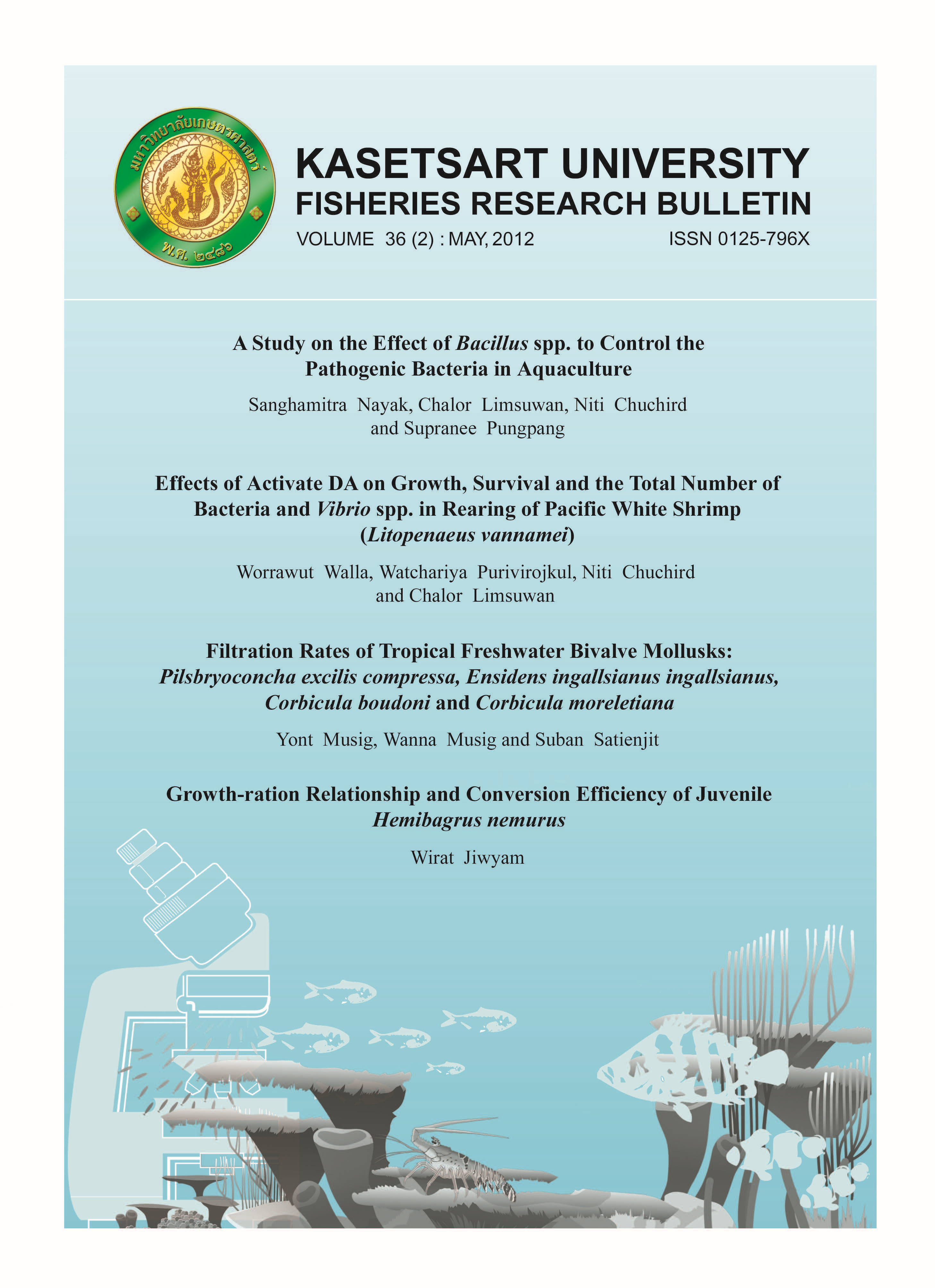A Study on the Effect of Bacillus spp. to Control the Pathogenic Bacteria in Aquaculture
Main Article Content
Abstract
The present study was aimed to select potential probionts from five different strains of Bacillus spp. The test pathogens included Vibrio spp. of V.vulnificus, V. fluvialis, V. parahaemolyticus, V. alginolyticus, V. mimicus and V. cholera (non 01), which were isolated from the white feces disease infected pacific white shrimp (Litopenaeus vannamei), and V. harveyi AQVH (Aquaculture V.harveyi) which was isolated from the diseased post larvae of pacific white shrimp. V.vulnificus and V. fluvialis included two strains of yellow and green respectively. Aeromonas hydrophila AQAH (Aquaculture A.hydrophila) was isolated from diseased Nile Tilapia (Oreochromis niloticus). The probiont strains were Bacillus subtilis B1, B. pumilus B2, B. subtilis B3, B.subtilis B4, and B. subtilis B5. The test of antagonism was carried out by cross streak and agar well diffusion assay (AWDA). Antagonistic activities were observed in B1, B2 and B5 against A. hydrophila by B1 and against all the Vibrio species by the other two strains. B1 and B5 were found to antagonize by inhibition to the pathogens while B2 colonized on the pathogens in cross streak method. In AWDA, these three probionts produced an antimicrobial substance evidenced by the presence of a clear zone after respective hours of incubation with the pathogens. B2 and B5 were found to retain antimicrobial activity up to seven days while B1 up to five days. There was no antagonism found in B3 and B4 against the selected pathogens. Based on the results of cross streak and AWDA, the probionts B1, B2 and B5 were subjected to co-culture experiments where all the Bacillus species were cultured individually with the target pathogen for 120 hours and compared with the monoculture of each strain to determine the potentiality of competitive exclusion of the test probionts for the target pathogens. It was observed that B1 was able to reduce the growth of A. hydrophila by about 61.81%, while B2 and B5 inhibited the growth of Vibrio spp. by more than 90 and 85%, respectively, at the end of 120 hours of co-culture. These results suggested that B1, B2 and B5 could be recommended to be used as effective probiotic for aquaculture practices.


